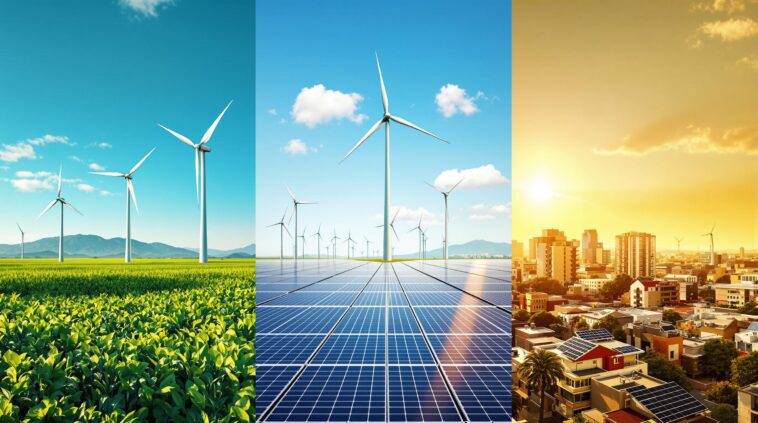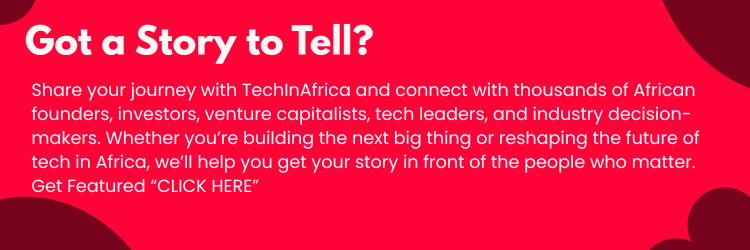Africa has immense renewable energy potential, particularly in solar power, yet faces significant challenges. Here’s a quick snapshot of the continent’s renewable energy landscape:
- Kenya: Leads with 90% renewable electricity, supported by feed-in tariffs, VAT exemptions, and diverse energy sources (geothermal 45%, solar 17%). Challenges include grid management and off-peak energy surplus.
- South Africa: Aims for 42% renewable electricity by 2030. Incentives include tax credits and the REIPPP program. Struggles with high costs, grid integration, and competition from imports.
- Nigeria: Targets 30% renewable energy by 2030 with a focus on rural electrification and public-private partnerships. Faces grid capacity issues and complex regulations.
Quick Comparison
| Country | Strengths | Weaknesses |
|---|---|---|
| Kenya | 90% renewable grid, strong policies | Grid issues, off-peak surplus |
| South Africa | Incentives, diverse programs | High costs, competition, grid challenges |
| Nigeria | Rural focus, partnerships, incentives | Grid limits, regulatory complexity |
Africa’s path to renewable energy success depends on improving grid infrastructure, simplifying regulations, and fostering regional collaboration. These efforts can unlock the continent’s vast solar potential.
Why Kenya is leading on renewable energy in Africa
1. Kenya’s Approach to Renewable Energy
Kenya has made impressive strides in renewable energy, with 90% of its national grid powered by renewable sources. Its strategy combines ambitious goals with practical steps, making it a standout example in Africa.
Incentives
To encourage renewable energy use, Kenya offers a feed-in tariff (FiT) program that supports energy from wind, solar, and geothermal sources. The government also provides VAT exemptions for solar panels and requires new buildings to include solar installations [4] [6].
Current Energy Mix
Kenya’s energy production is diverse, which helps reduce dependence on fossil fuels and boosts energy security:
| Energy Source | Percentage |
|---|---|
| Geothermal | 45% |
| Hydropower | 19% |
| Solar | 17% |
| Wind | 3% |
| Other Sources | 16% |
Infrastructure Development
In 2024, Kenya secured $70 million in concessional funding to upgrade its grid infrastructure and encourage more competition in the energy sector [2].
Technical Challenges
Kenya faces challenges like underused energy generation during the night and high demand during peak hours. To tackle this, the country is focusing on energy storage and improving grid management. Investments in battery energy storage systems and participation in the CIF‘s REI Learning Platform are key steps in addressing these issues [2].
Regional Cooperation
Kenya is also involved in regional initiatives, sharing its expertise and collaborating internationally to advance renewable energy projects. Its approach serves as a valuable example for other African nations looking to enhance their renewable energy efforts.
Kenya’s progress underscores the importance of strong policy frameworks and cross-border collaboration in expanding renewable energy across the continent.
2. South Africa’s Approach to Renewable Energy
South Africa, known for its coal-dependent energy landscape, is making a noticeable move toward cleaner energy. The country’s Integrated Resource Plan (IRP) 2019 outlines a goal to achieve 42% of electricity from renewable sources by 2030 [5].
Incentives
To promote renewable energy, South Africa offers various incentives like tax credits, feed-in tariffs, capital subsidies, and the Renewable Energy Independent Power Producer Procurement (REIPPP) program, which supports private-sector involvement.
Challenges
Despite these efforts, South Africa faces several obstacles. These include the high costs of solar photovoltaic (PV) systems, limited opportunities for strong returns on investment, competition from imported renewable energy products, and a shortage of skilled workers in the sector [6].
Progress So Far
Renewable energy currently accounts for 10% of the nation’s electricity supply. By 2030, South Africa aims to add 18.7 GW of solar PV and 14.4 GW of wind capacity [5]. A prime example of its capabilities is the Sere Wind Farm in the Western Cape, a 100 MW project developed by Eskom in 2015, showcasing the country’s ability to execute large-scale renewable energy initiatives [5].
Regional and Global Collaboration
South Africa actively works with regional organizations like AREA and ECOWAS to share expertise and advance renewable energy projects. Additionally, its commitment to international agreements, such as the Paris Agreement, underscores its efforts to transition to a low-carbon economy [5].
The country’s journey highlights both the potential and hurdles in shifting from coal to renewable energy, paving the way for a closer look at Nigeria’s strategy.
sbb-itb-dd089af
3. Nigeria’s Approach to Renewable Energy
Nigeria, the most populous country in Africa, is making strides to reshape its energy sector by focusing on renewable energy. The plan blends government policies with actionable steps to bring this vision to life.
Policy Framework and Incentives
In 2015, Nigeria introduced a feed-in tariff system aimed at encouraging private investment in rural electrification [3]. To boost renewable energy adoption, the government offers financial incentives like tax exemptions, capital subsidies for clean energy projects, and funding options to support rural electrification efforts.
Implementation Challenges
Despite its ambitions, Nigeria faces several hurdles in rolling out renewable energy solutions. Limited grid capacity and outdated transmission systems add to financial obstacles such as steep upfront costs. These technical issues are further complicated by cumbersome regulatory processes and lack of coordination among government agencies [7].
Current Outcomes and Progress
Nigeria has set a target to generate 30% of its electricity from renewable sources by 2030 [7]. Progress so far includes:
- New off-grid solar projects aimed at rural electrification
- Simplified regulations to draw in international investors
- Partnerships between public and private sectors to drive renewable energy initiatives
Regional Collaboration
Nigeria works closely with regional organizations like AREA and ECOWAS to share knowledge, gain technical support, and align renewable energy strategies [3]. The Energy Transition Centre also plays a role by offering advisory and legal assistance to help integrate renewable energy into the country’s energy mix [7].
Future Outlook
To meet its renewable energy targets, Nigeria needs to improve grid reliability and simplify regulatory procedures. The growing demand for off-grid solar solutions in rural areas presents a promising area for expansion [7].
Nigeria’s approach to renewable energy highlights a combination of achievements and obstacles, providing valuable insights for shaping energy policies across the African continent.
Strengths and Weaknesses of Each Policy
Analyzing renewable energy policies in Kenya, South Africa, and Nigeria reveals different strategies and varying outcomes. Each country has its own advantages but also grapples with specific challenges in implementation.
| Country | Strengths | Weaknesses |
|---|---|---|
| Kenya | – Effective utility and micro-grid policies – Feed-in tariff system working well – 90% renewable energy in grid – Strong geothermal focus |
– Limited innovation capacity – Grid management issues – Low sector employment – Off-peak energy surplus |
| South Africa | – Strong government incentives – Structured feed-in tariffs – Diverse energy programs – Clear solar PV targets |
– Competition from foreign panels – High startup costs – Few consumer-focused schemes – Grid integration problems |
| Nigeria | – Ambitious 2030 targets – Focus on rural electrification – Public-private partnerships – Tax incentives |
– Limited grid capacity – Complex regulations – Slow technology adoption – Poor coordination among agencies |
Kenya’s energy mix, particularly its leadership in geothermal energy, stands out as a major success. However, challenges like grid management and employment gaps highlight areas needing more attention.
South Africa has made strides with government incentives and solar PV goals, but struggles with high startup costs and integrating renewables into its grid. Meanwhile, Nigeria’s focus on rural electrification and partnerships is promising, though grid limitations and regulatory complexity hinder progress.
One key difference lies in how these countries adopt technology. Kenya has managed to integrate various renewable sources, while South Africa and Nigeria face more obstacles in building infrastructure and adopting new technologies [2].
From this comparison, it’s clear that effective renewable energy policies depend on:
- Strong policy frameworks and incentives
- Advanced grid management
- Balanced investment strategies
- Building local expertise
These findings underline the need for a coordinated approach to unlock Africa’s renewable energy potential. By sharing lessons and best practices, countries can address challenges and make the most of the continent’s abundant solar resources [1].
This analysis lays the groundwork for actionable steps to harmonize renewable energy policies across Africa.
Key Takeaways and Recommendations
Africa has enormous potential for renewable energy, boasting 60% of the world’s best solar resources. Yet, 600 million people still lack access to electricity, highlighting the urgent need for bold and effective policies.
Kenya’s success in achieving 90% renewable electricity [2] shows how focused policies and smart investments can transform the energy landscape.
Tackling Africa’s renewable energy challenges requires a well-rounded strategy that addresses infrastructure, policy, and regional collaboration:
Grid Infrastructure and Management
- Introduce smart grids and energy storage systems to improve distribution and balance supply with demand.
- Enhance grid flexibility to better manage renewable energy sources.
- Upgrade distribution networks to ensure efficient power delivery.
Policy Framework Improvements
| Area of Focus | Suggested Actions |
|---|---|
| Financial Models | – Redirect funding from fossil fuels to renewable projects. – Use microfinance and pay-as-you-go systems. – Offer targeted tax breaks. |
| Technical Upgrades | – Modernize grid infrastructure. – Deploy energy storage technologies. – Roll out smart metering systems. |
| Skill Development | – Train local professionals. – Promote knowledge-sharing initiatives. – Invest in research and development. |
Regional Collaboration
- Participate in platforms like CIF to exchange ideas and best practices.
- Harmonize policies for cross-border electricity trading.
- Share technical resources and expertise across nations.
To achieve universal electricity access by 2030, African countries must speed up renewable energy adoption. Key steps include:
- Redirecting funds from halted coal projects to solar PV initiatives [1].
- Strengthening institutional frameworks for better governance.
- Creating innovative financing options.
- Enhancing regional power system integration.
FAQs
Which country in Africa has the most renewable energy?
South Africa has the largest total renewable energy capacity, reaching 10.62 GW as of 2023. On the other hand, Kenya stands out for having 90% of its electricity coming from renewable sources [1] [2]. These achievements reflect different strategies and priorities in renewable energy development across the continent.
| Country | Current Achievement | Near-Term Target |
|---|---|---|
| South Africa | 10.62 GW total capacity | 8,400 MW new PV by 2030 [6] |
| Kenya | 90% renewable electricity | 100% clean energy by 2030 [2] |
| Nigeria | Mixed energy sources | 20% renewable production by 2030 [6] |
Several factors influence how African countries progress in adopting renewable energy:
- National policies and regulations
- Existing infrastructure
- Investment opportunities
- Technical expertise
- Grid efficiency
These differences emphasize the importance of regional collaboration and shared strategies to maximize Africa’s renewable energy potential. Working together can help overcome challenges and create a more unified approach to clean energy development.
Related Blog Posts
- African Tech Hub Comparison: Lagos vs Nairobi vs Cape Town
- Top 7 African Tech Hubs Building Communities
- 5 African Startups Advancing Battery Recycling
- Top 5 Startups to Watch in South Africa in 2025





